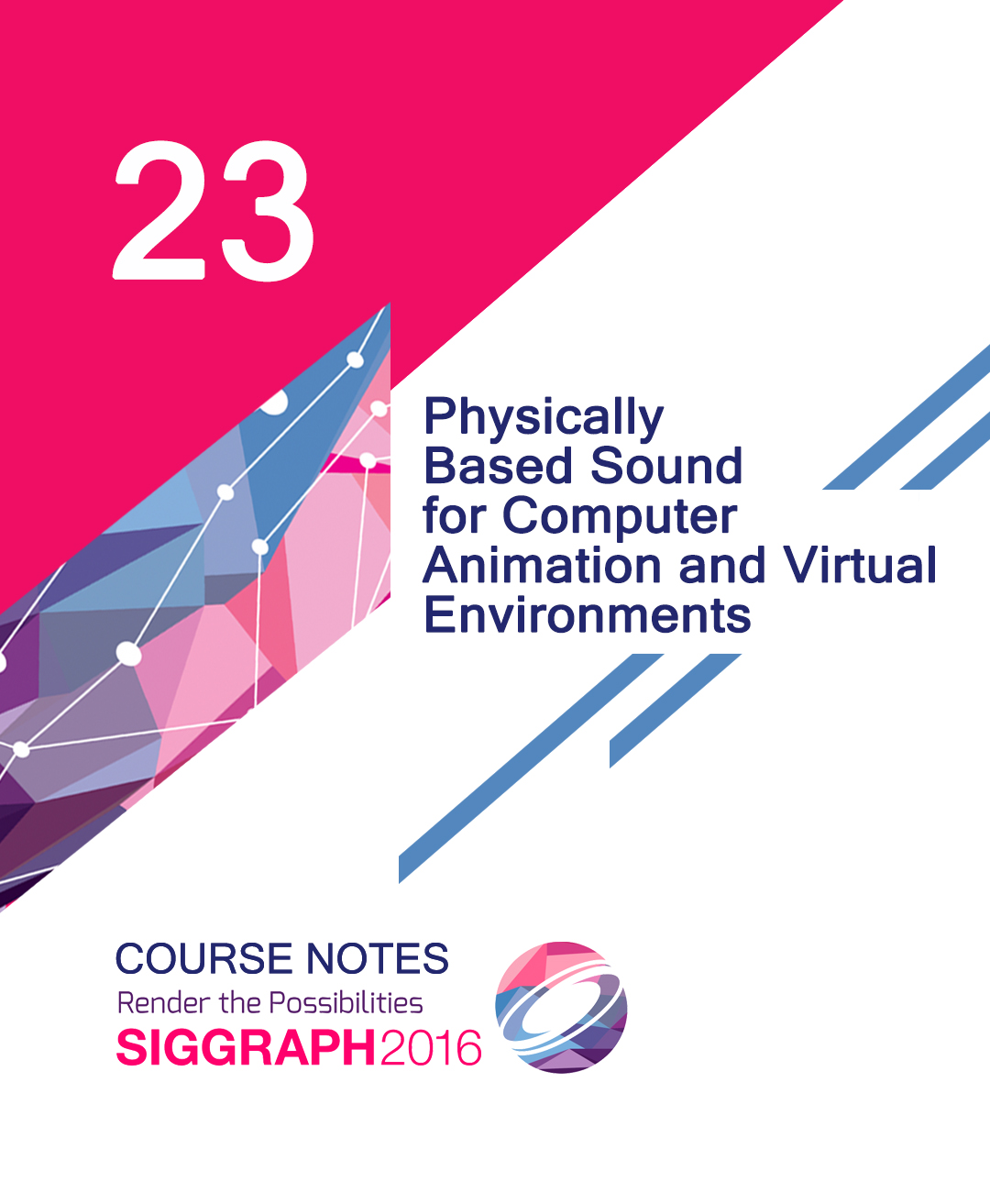“Physically Based Sound for Computer Animation and Virtual Environments” by Zheng, Langlois and Mehra
Conference:
Type(s):
Entry Number: 23
Title:
- Physically Based Sound for Computer Animation and Virtual Environments
Course Organizer(s):
Presenter(s)/Author(s):
Abstract:
Prerequisites
Familiarity with mainstream computer graphics and related mathematics such as basic vector/matrix math and differential equations. Knowledge of physically based modeling is helpful, especially for the more advanced topics. No knowledge of sound modeling is assumed.
Level
Advanced
Who Should Attend
Students, practitioners and researchers interested in computer animation and virtual environments, and connecting physically based animation with sound generation.
Description
Physically based sound is an important emerging approach to computer synthesis of realistic synchronized sounds for physically based animation and real-time virtual environments. A major challenge for learning and implementing these sound techniques is the wide range of physically based models and sound phenomena involved, as well as the need for optimizations. Many publications on physically based animation and sound rendering assume mathematical background that many in the graphics community lack. The result is that learning physics-based sound techniques is unnecessarily difficult for many interested students and practitioners.
The main goal of this course is to make the principles and methods of physically based sound accessible to a broader computer-graphics audience. The course covers sound-source models for sonifying important phenomena from physics-based animation: rigid bodies, brittle fracture, thin-shells, cloth, deformable collisions and contact, fluids, and fire. Material related to rigid-body sound is covered in greater detail in the first half of the course, which addresses fundamental topics such as modeling modal vibrations and sound radiation from surfaces. Further readings are suggested throughout the course notes. Several recent SIGGRAPH papers also serve as supplemental notes for more advanced topics.
With supporting software and implementation short-cuts, attendees can start using physically based sound immediately after completing the course.




